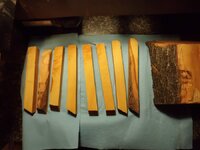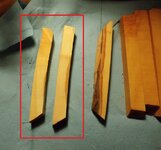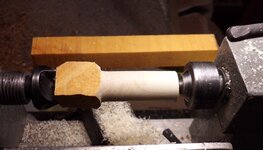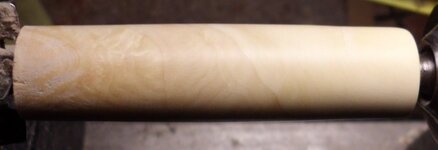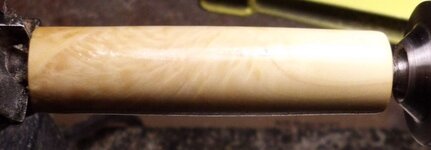Skie_M
Member
Ok, that got everybody's attention .... 
So yeah, I got me some free wood. I am not sure what species it is, but the guys from the tree cutting service mentioned taking down a large sycamore with orange/reddish wood ... They had some decent sized branches in the back of a truck that they let me have, as I wasn't interested in the large trunk pieces (way too big for me to process).
So ... as I was cutting a piece into roughly 1" square pen blank sizes to stack and dry (it's fresh cut), I noticed that the interior was a creamy off-white color. After drying on a blue shop towel for a half hour, the pieces are now a nice looking orange. I have the other half of this chunk laying to the right, so you can see the bark. It would also appear that anywhere it has made contact with iron has turned a rusty reddish color ...
What is this species?
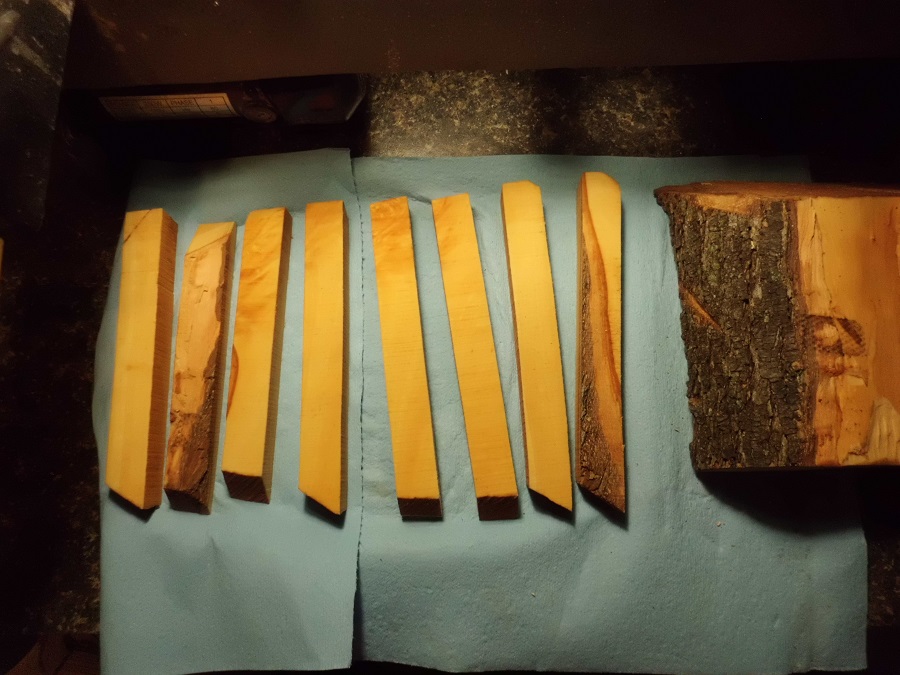
So yeah, I got me some free wood. I am not sure what species it is, but the guys from the tree cutting service mentioned taking down a large sycamore with orange/reddish wood ... They had some decent sized branches in the back of a truck that they let me have, as I wasn't interested in the large trunk pieces (way too big for me to process).
So ... as I was cutting a piece into roughly 1" square pen blank sizes to stack and dry (it's fresh cut), I noticed that the interior was a creamy off-white color. After drying on a blue shop towel for a half hour, the pieces are now a nice looking orange. I have the other half of this chunk laying to the right, so you can see the bark. It would also appear that anywhere it has made contact with iron has turned a rusty reddish color ...
What is this species?
Attachments
Last edited:

